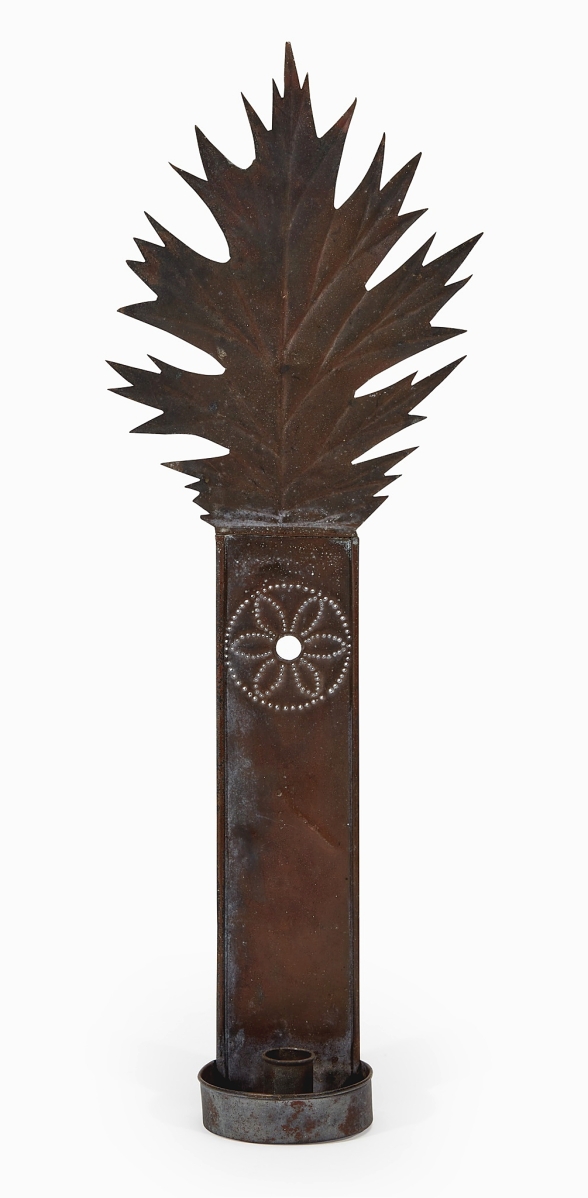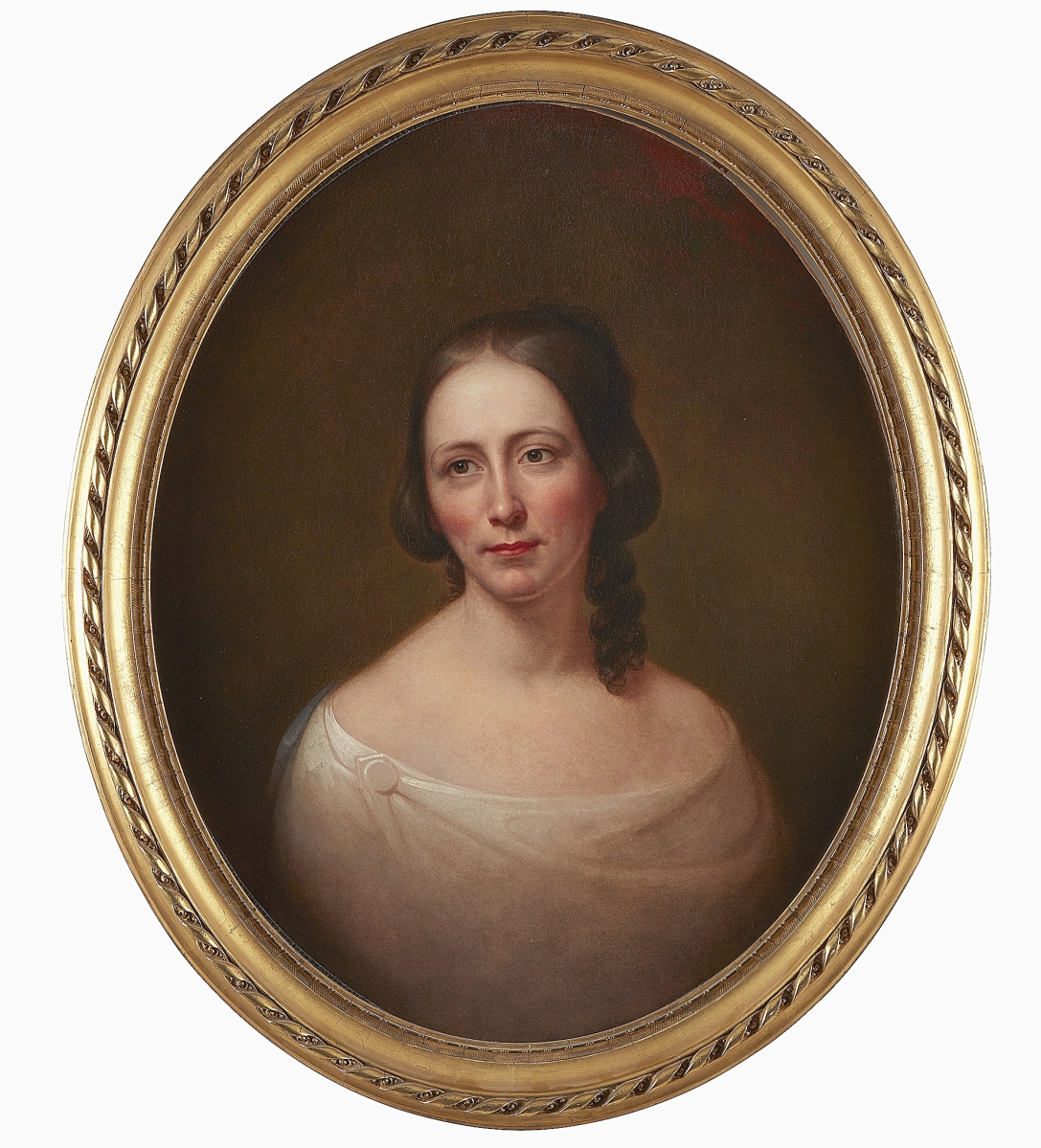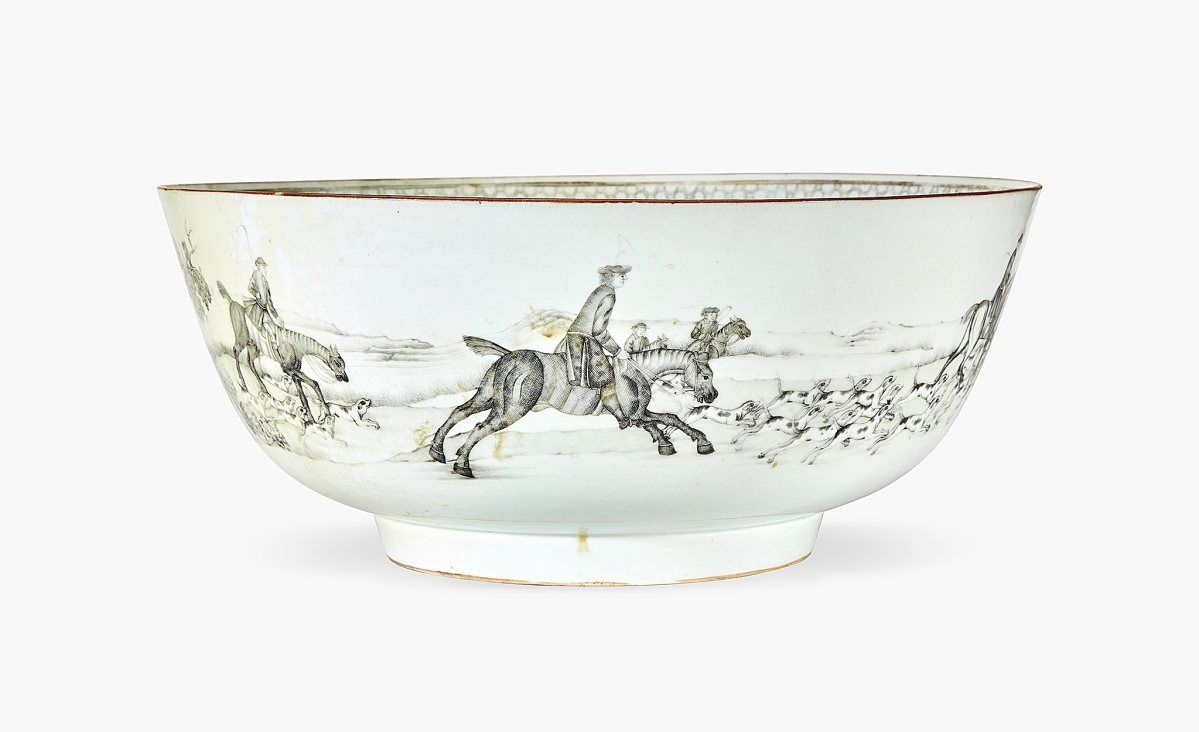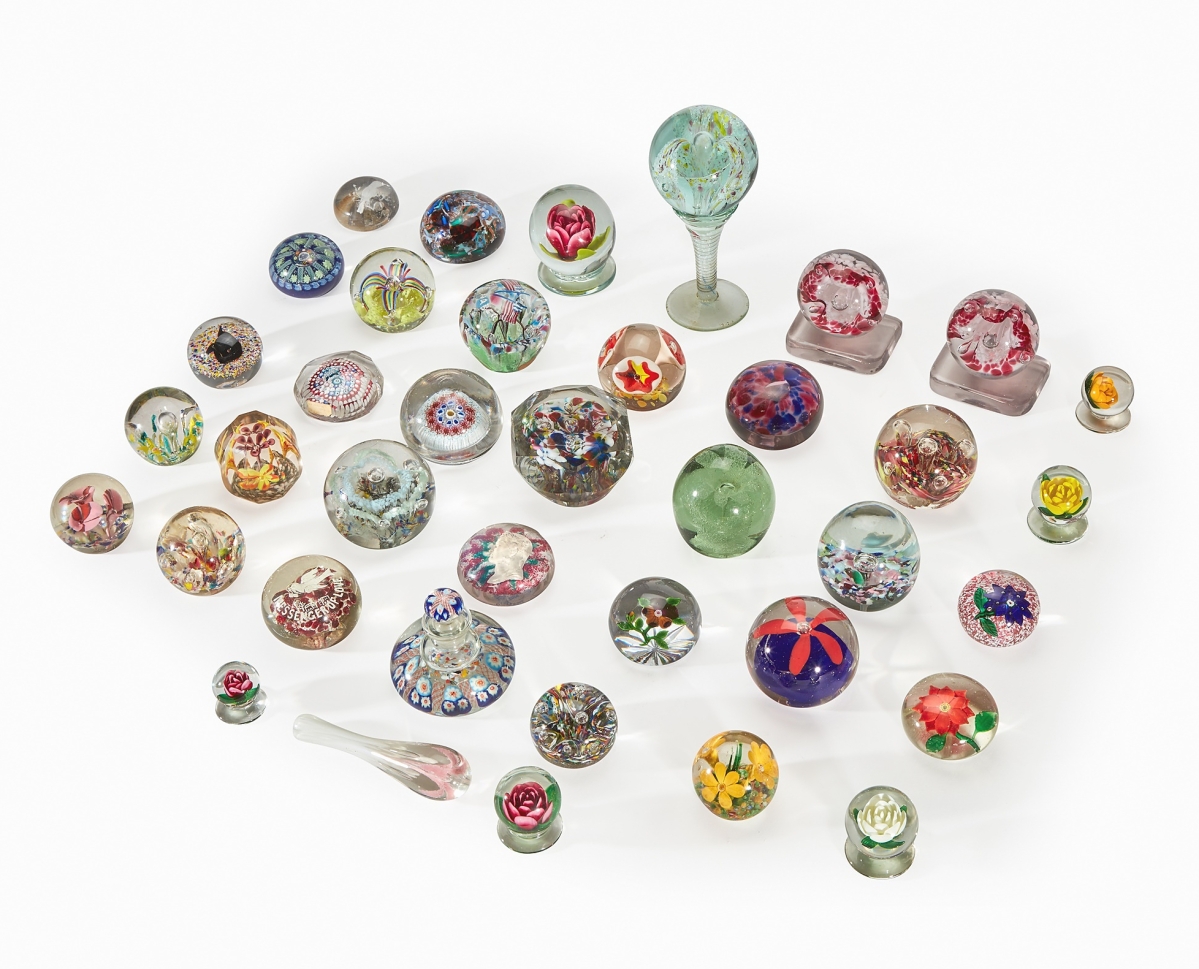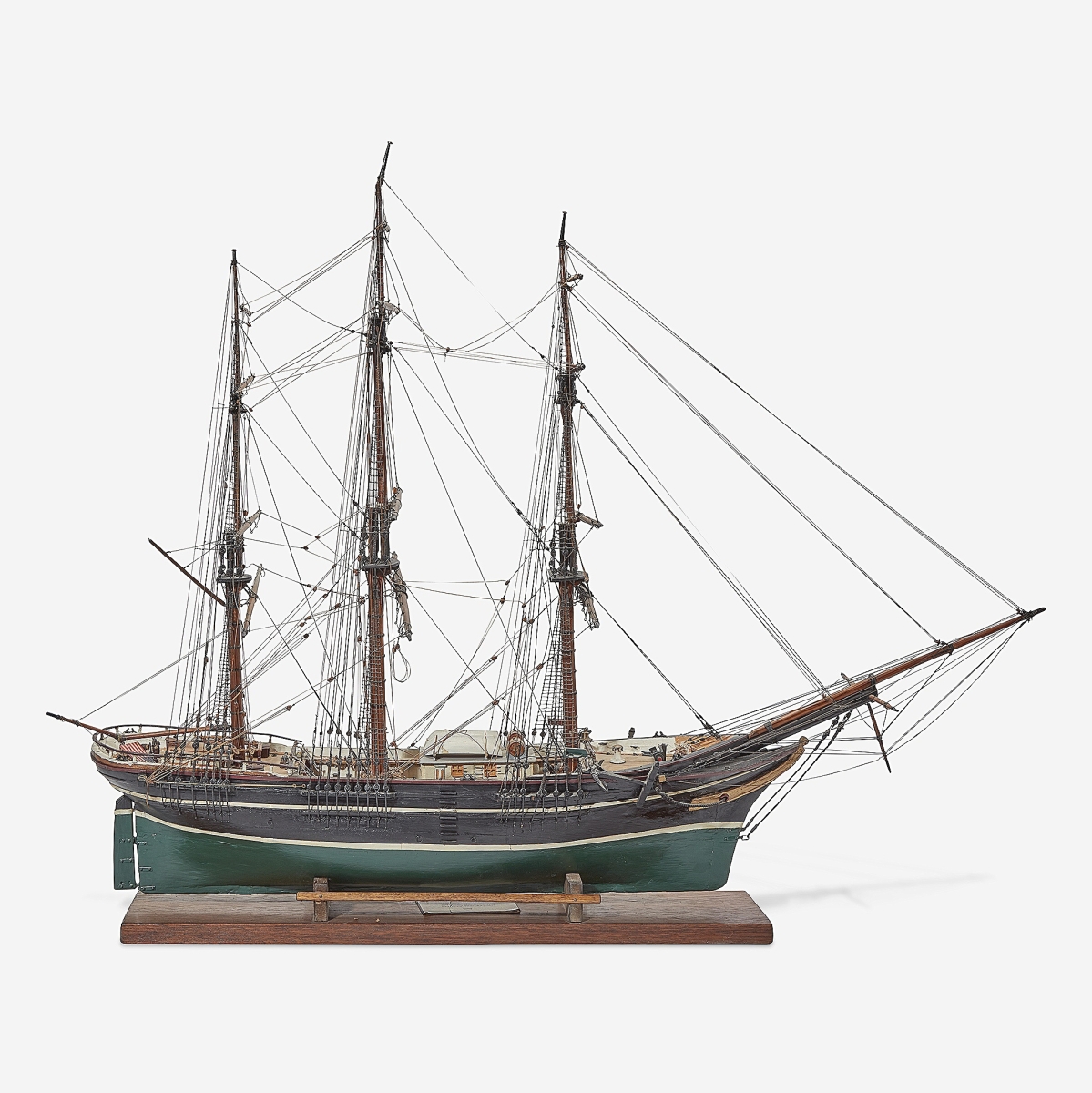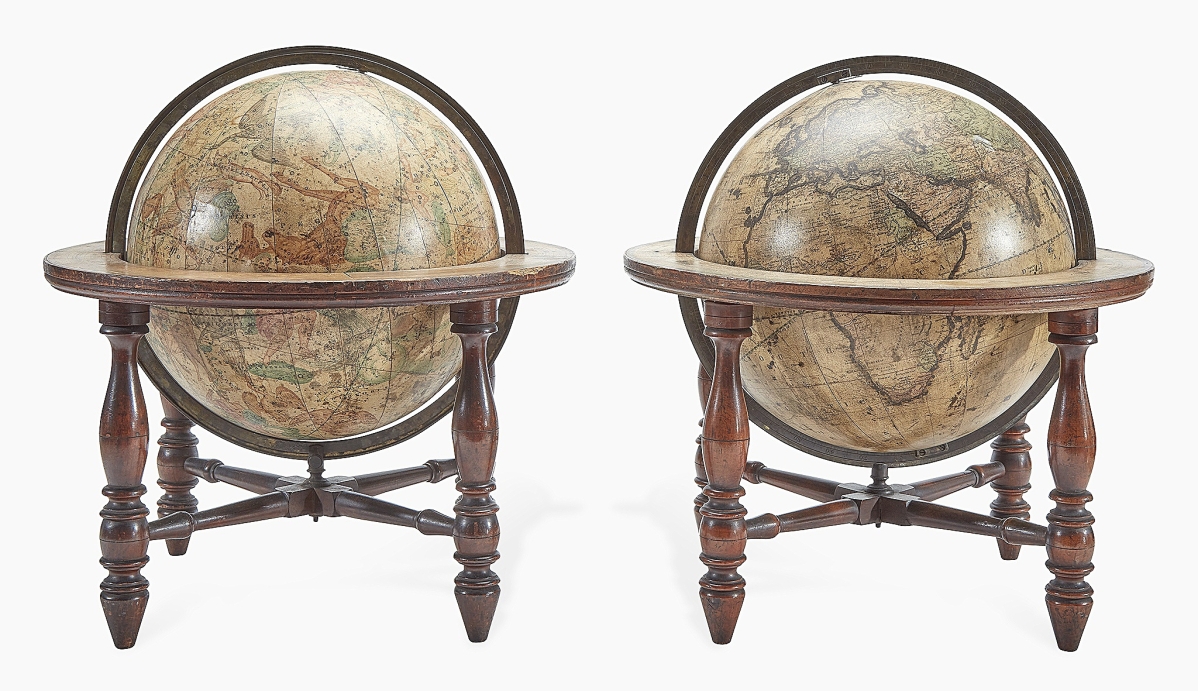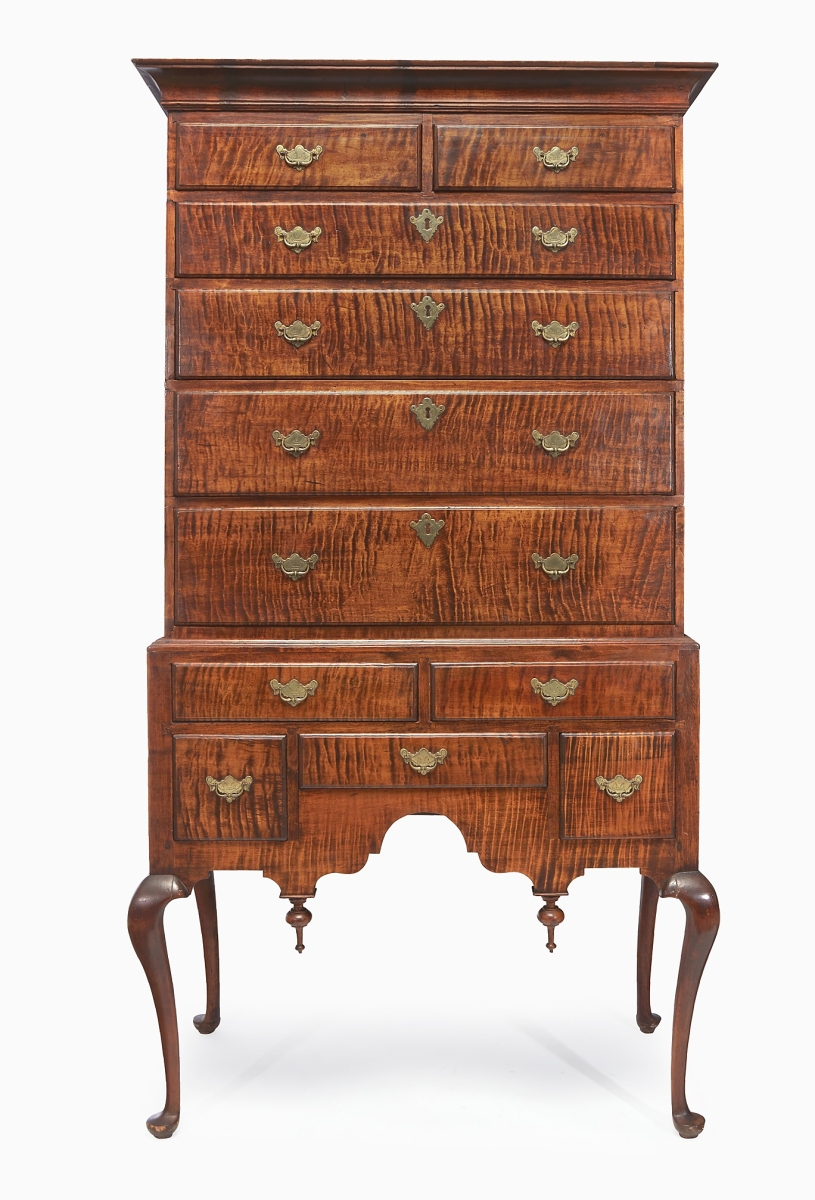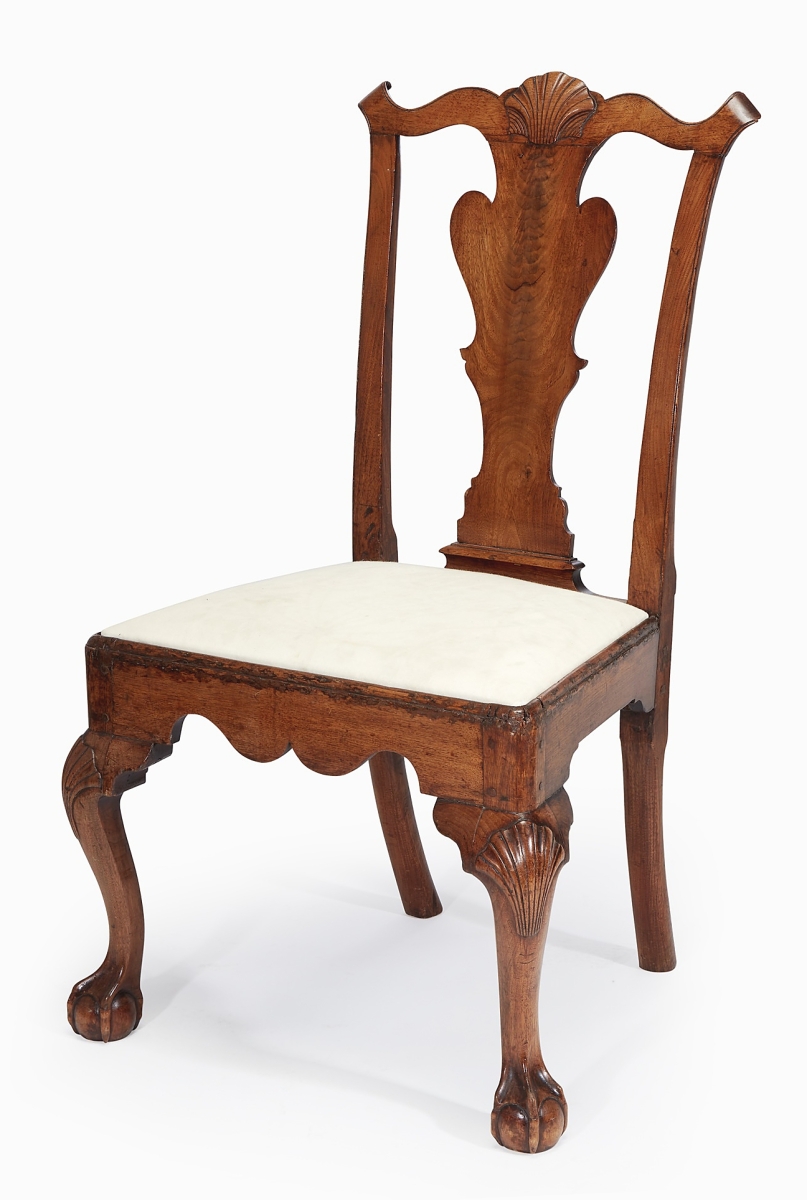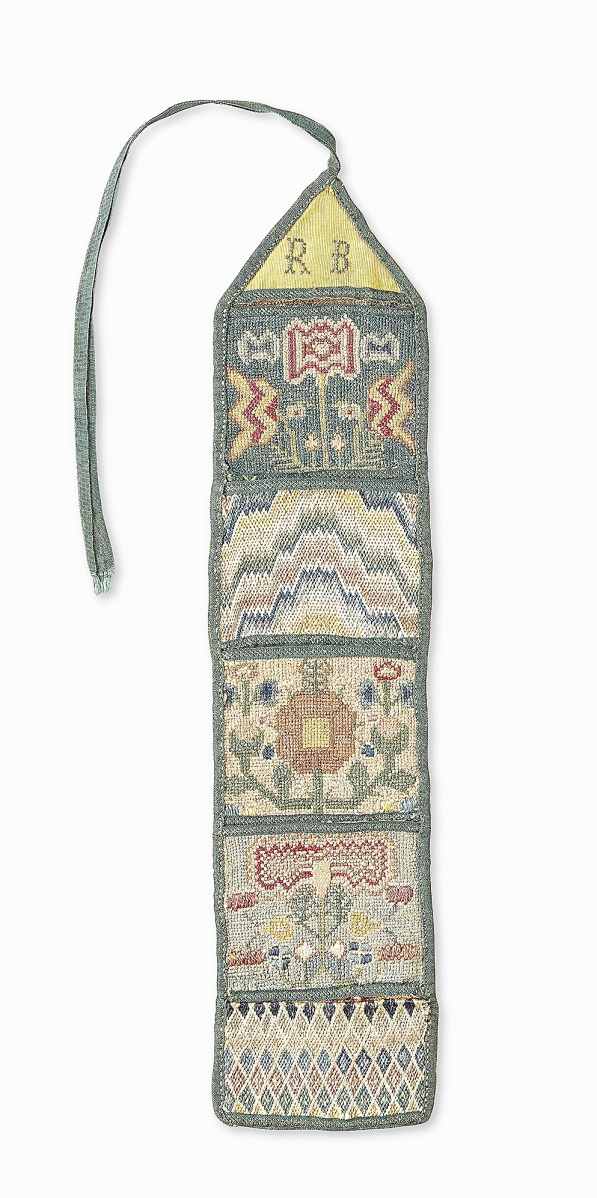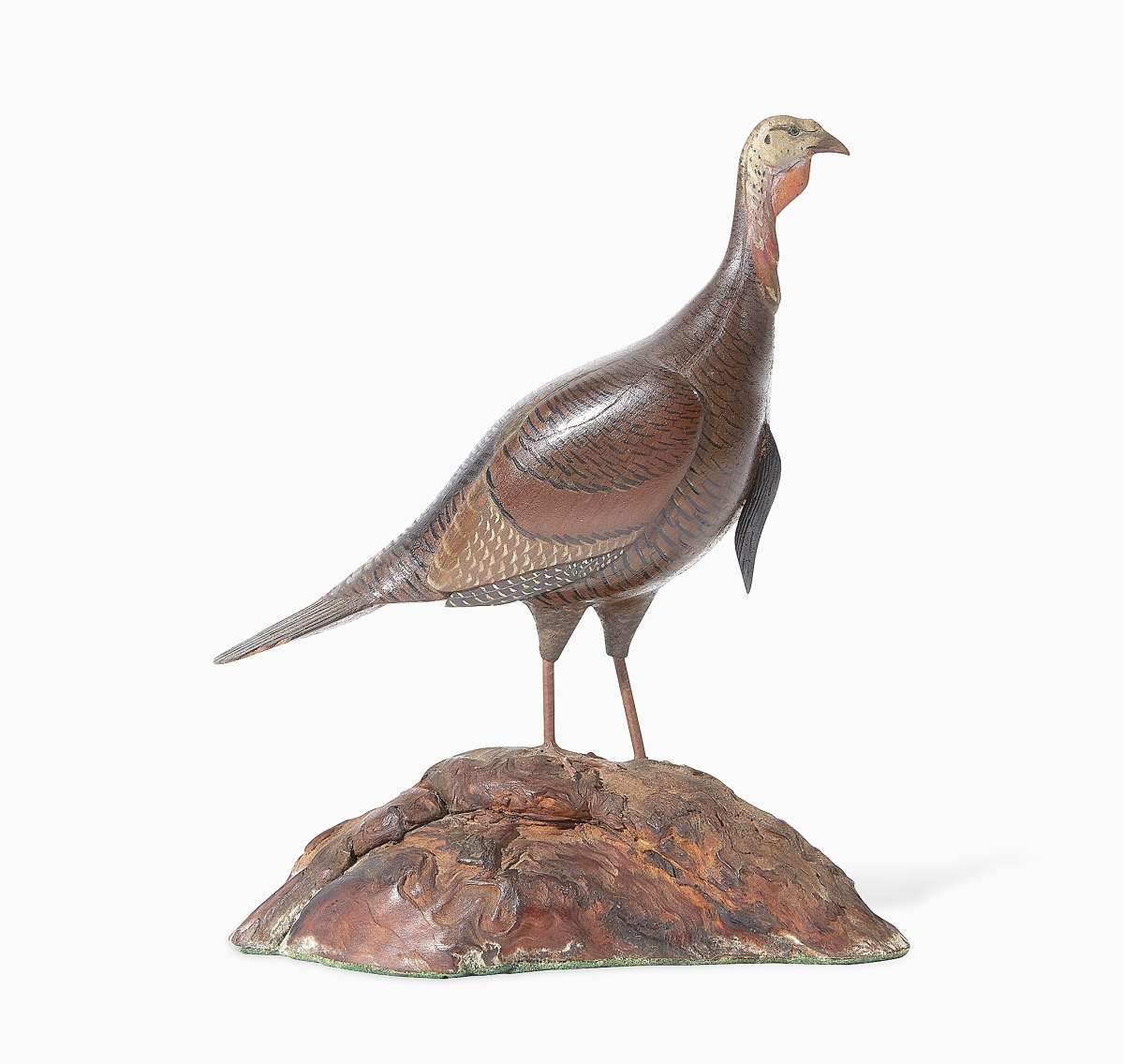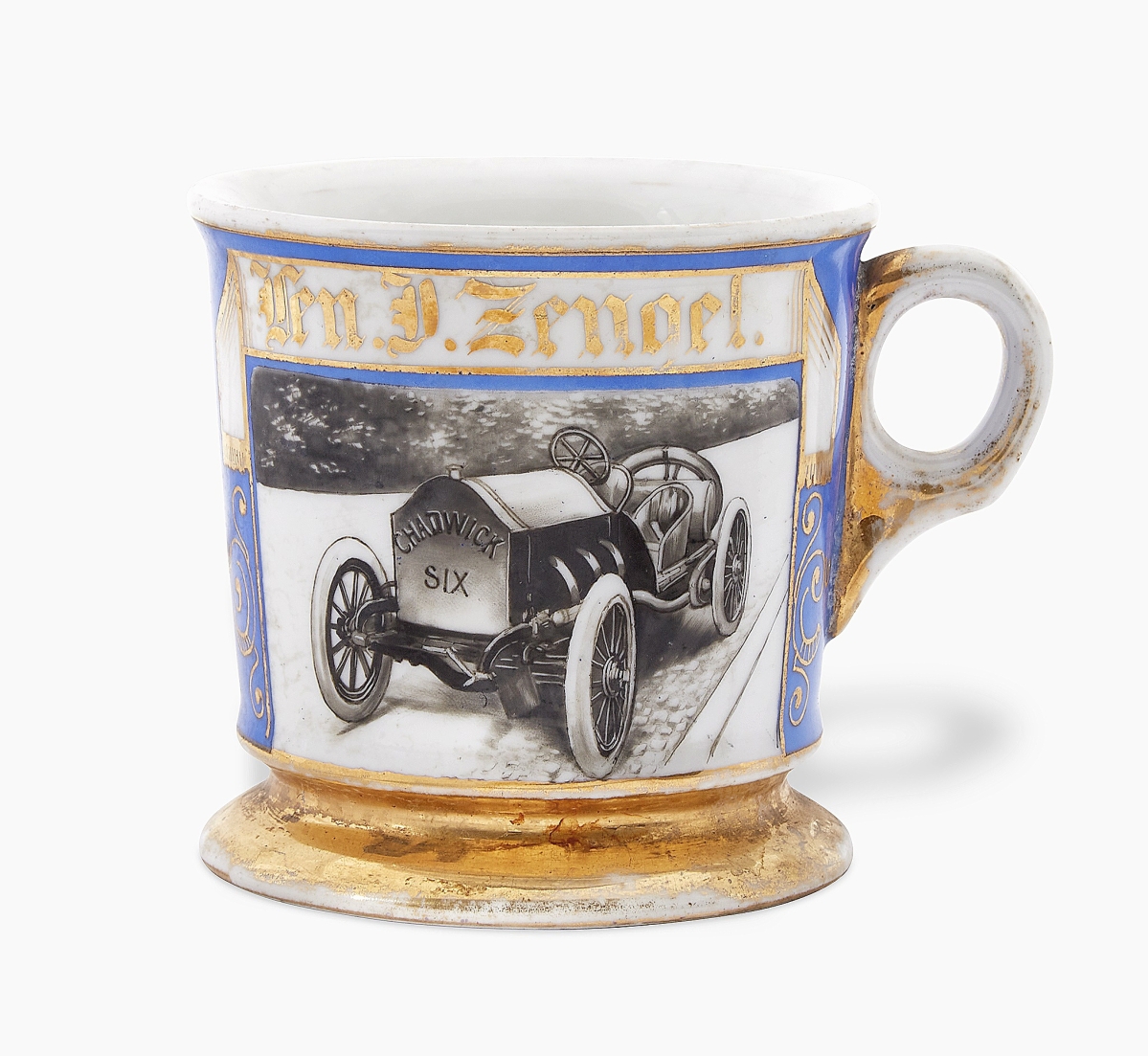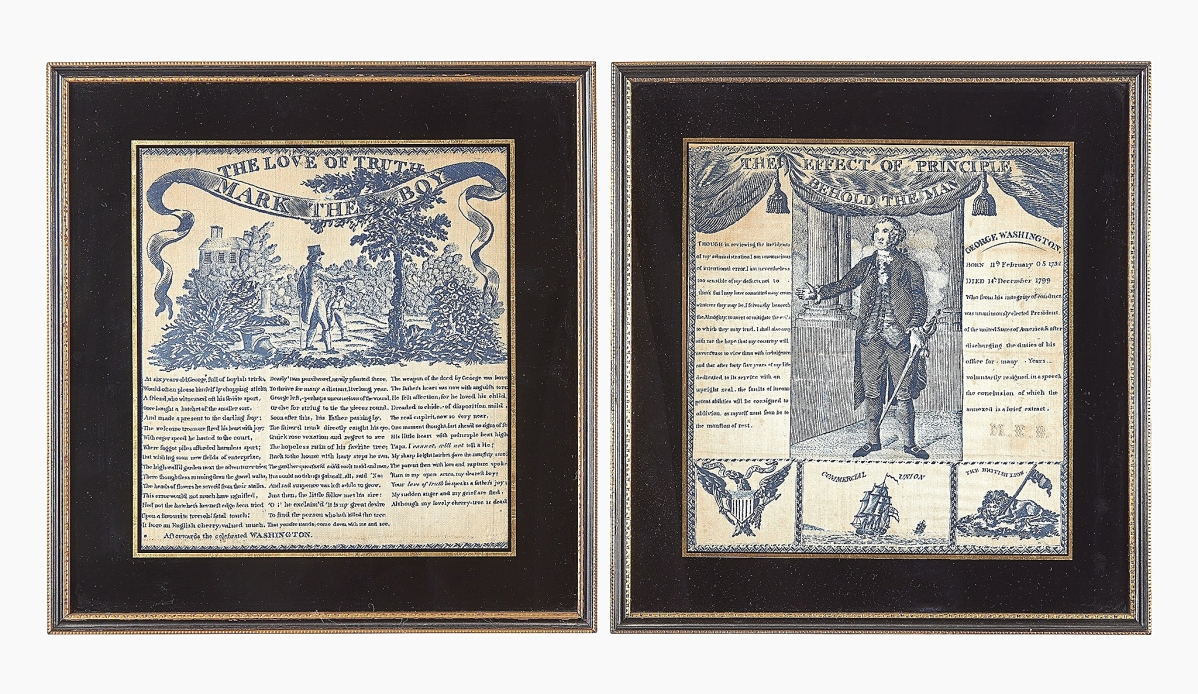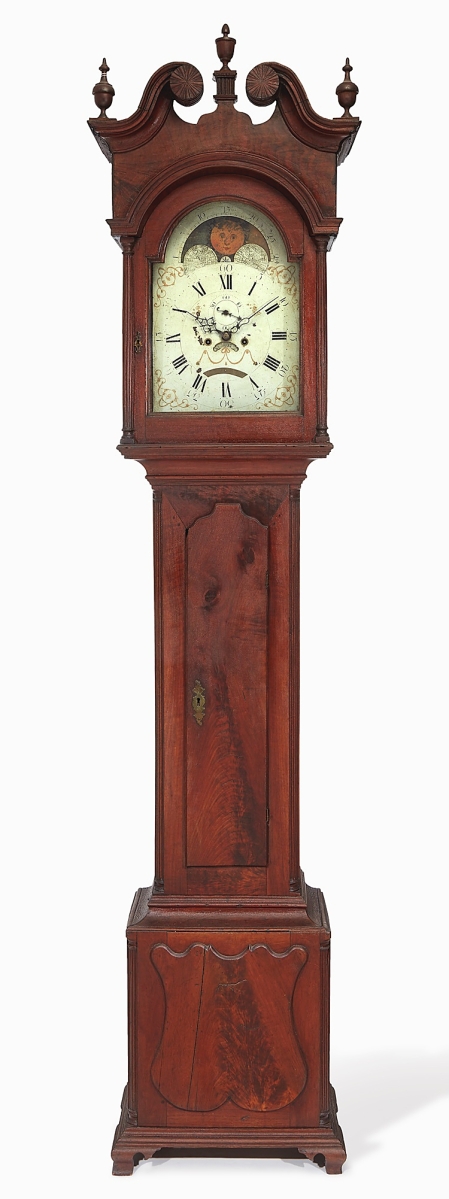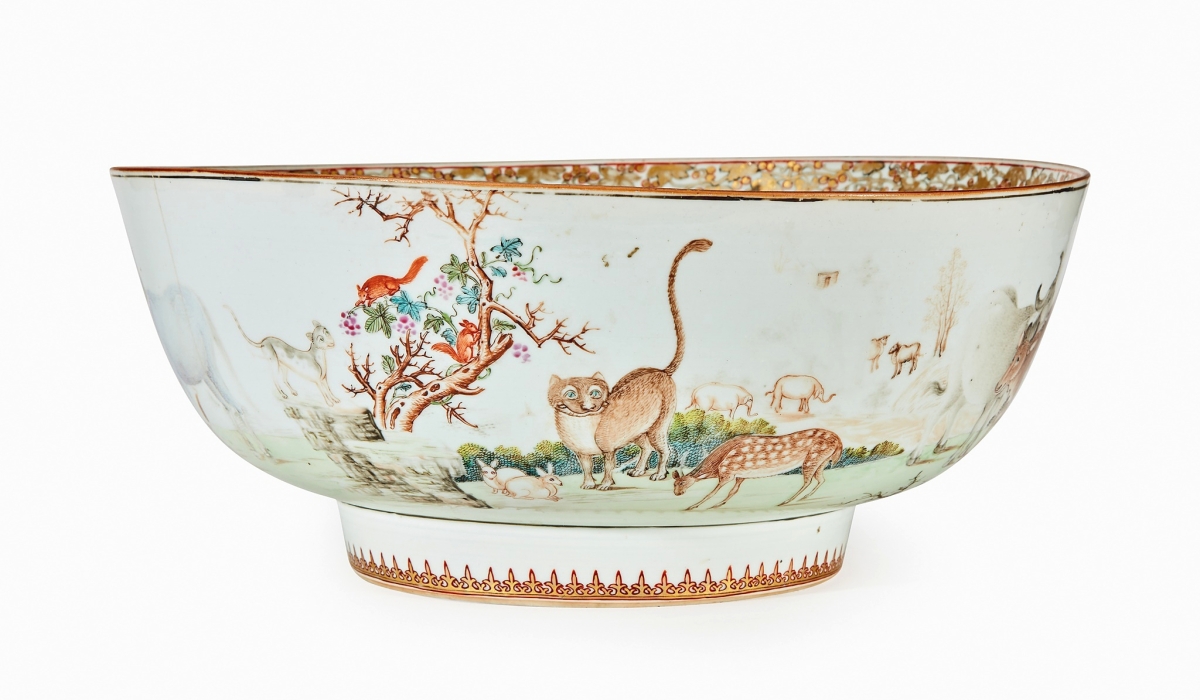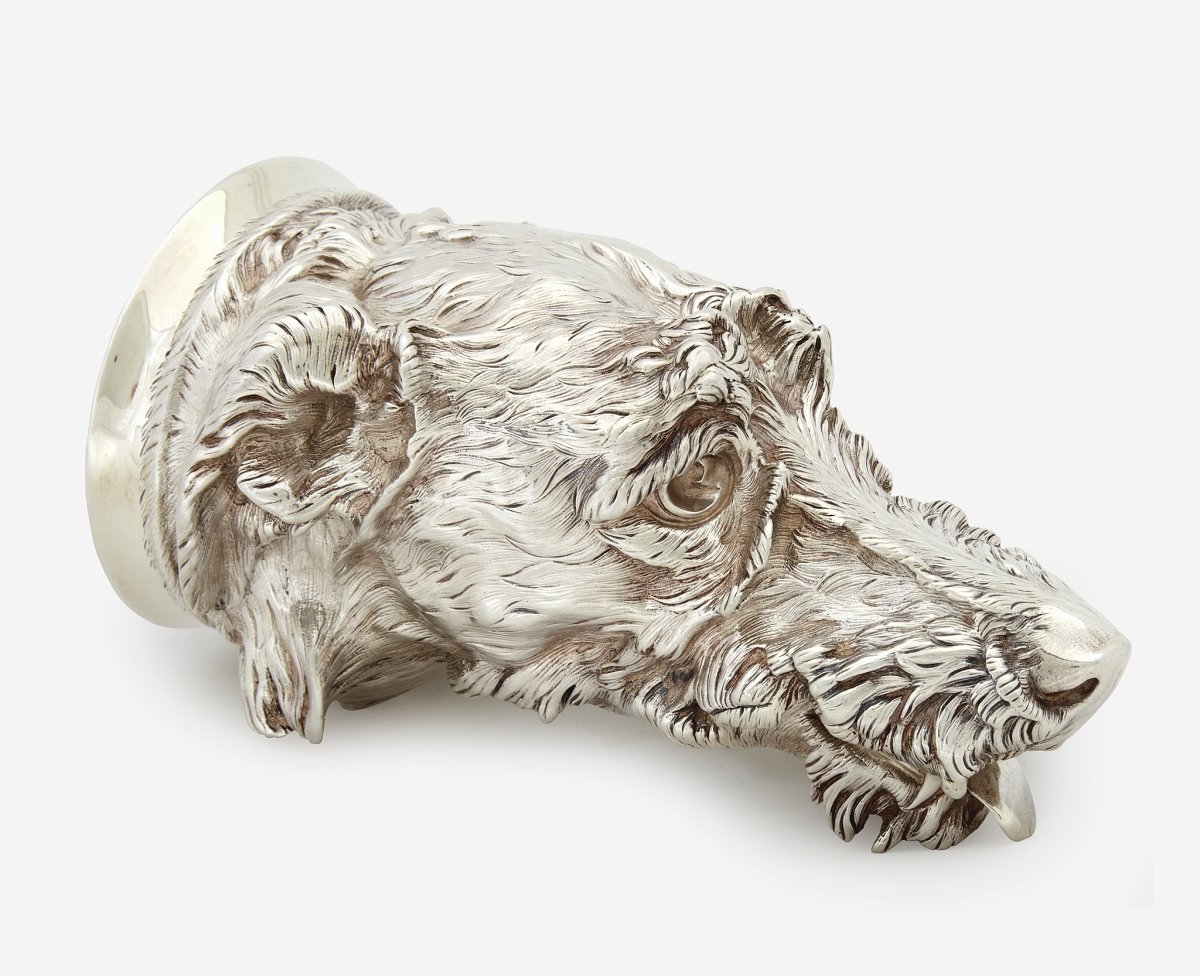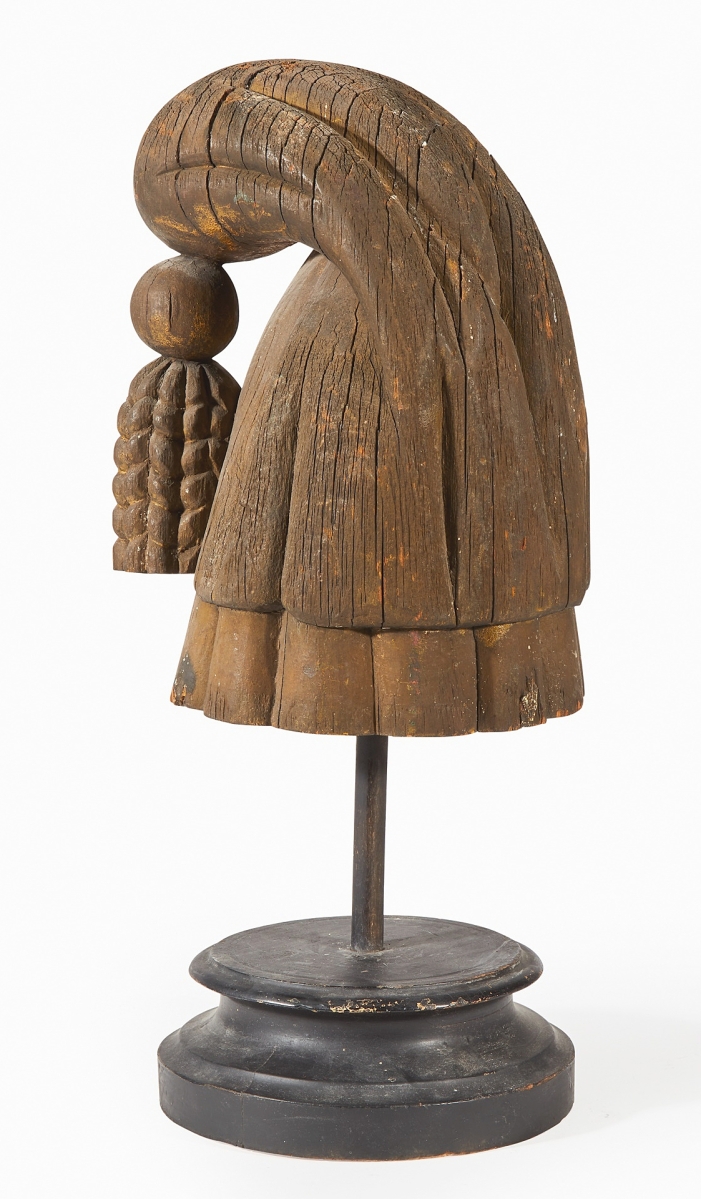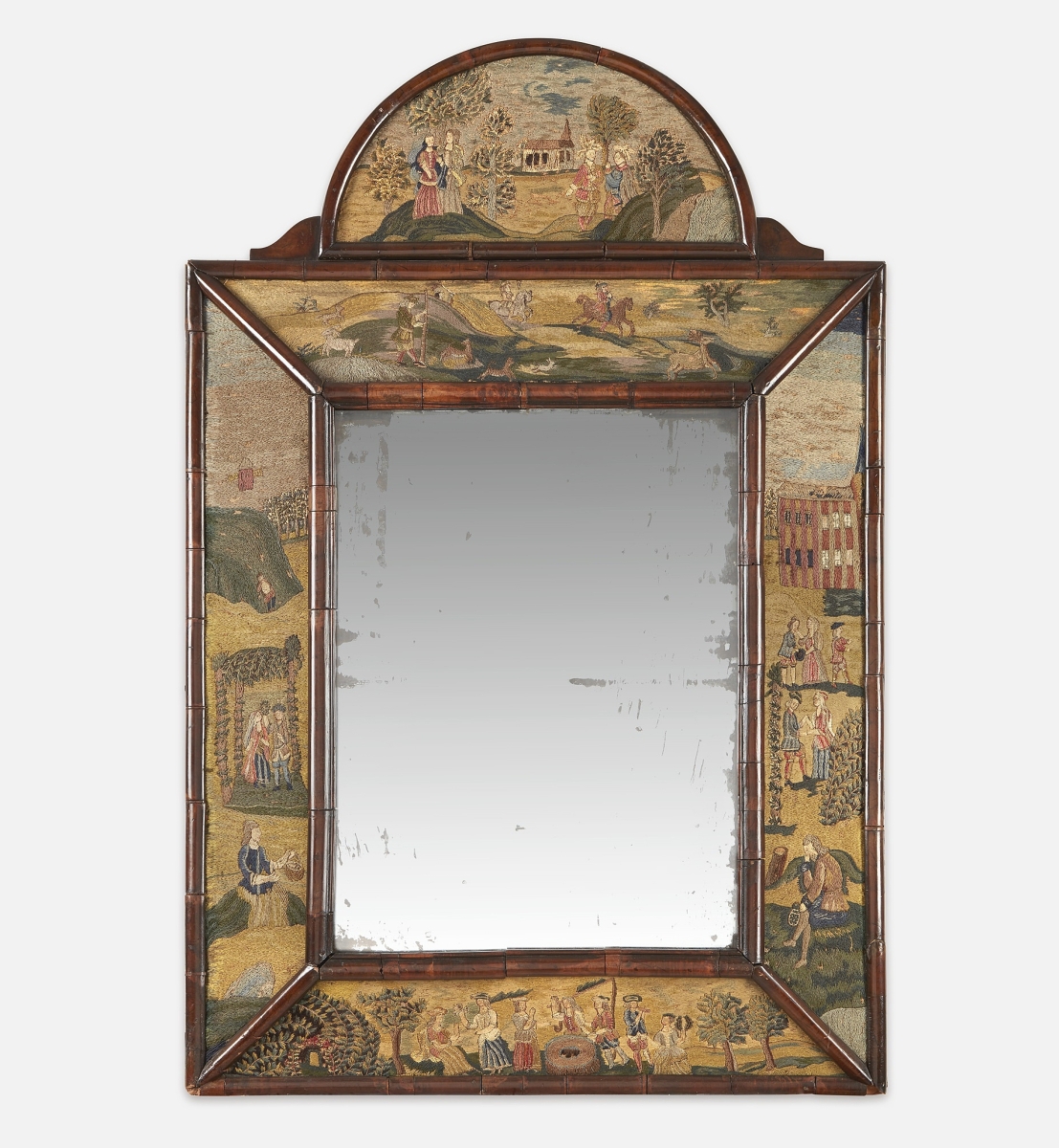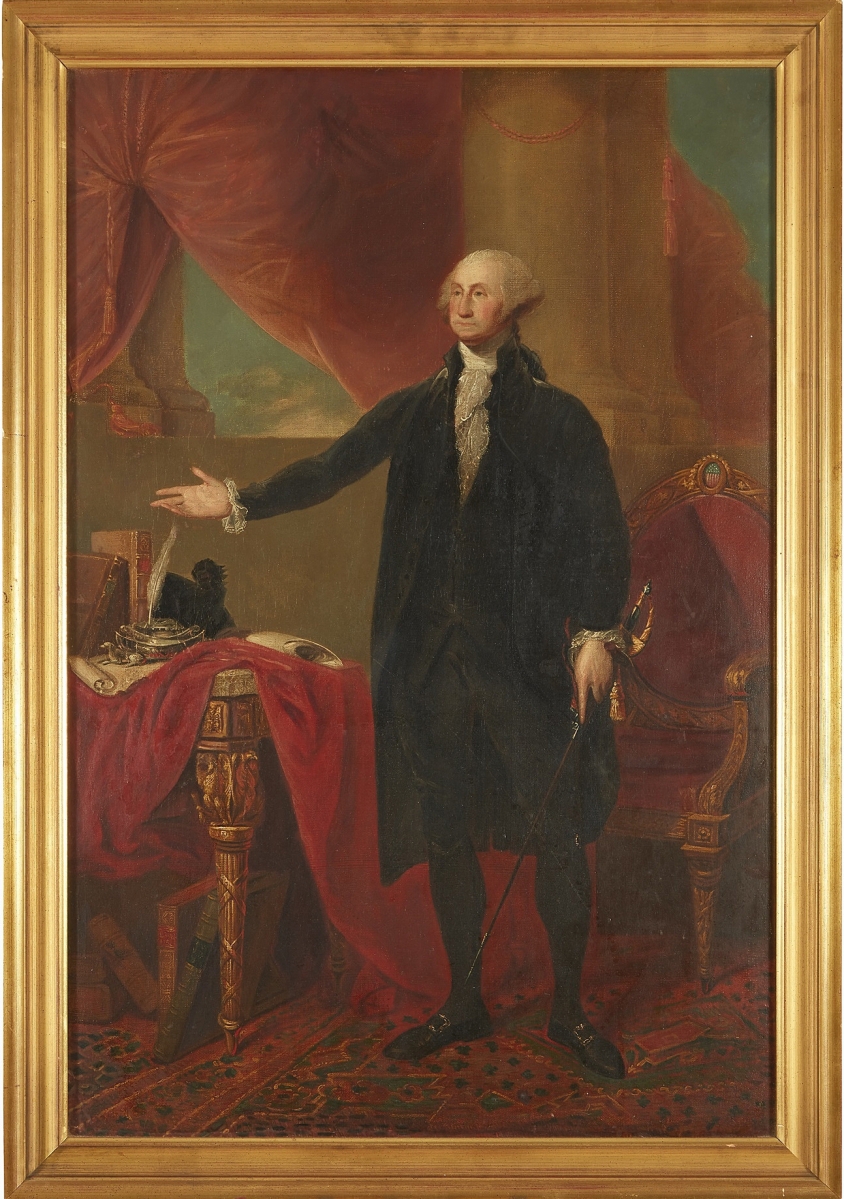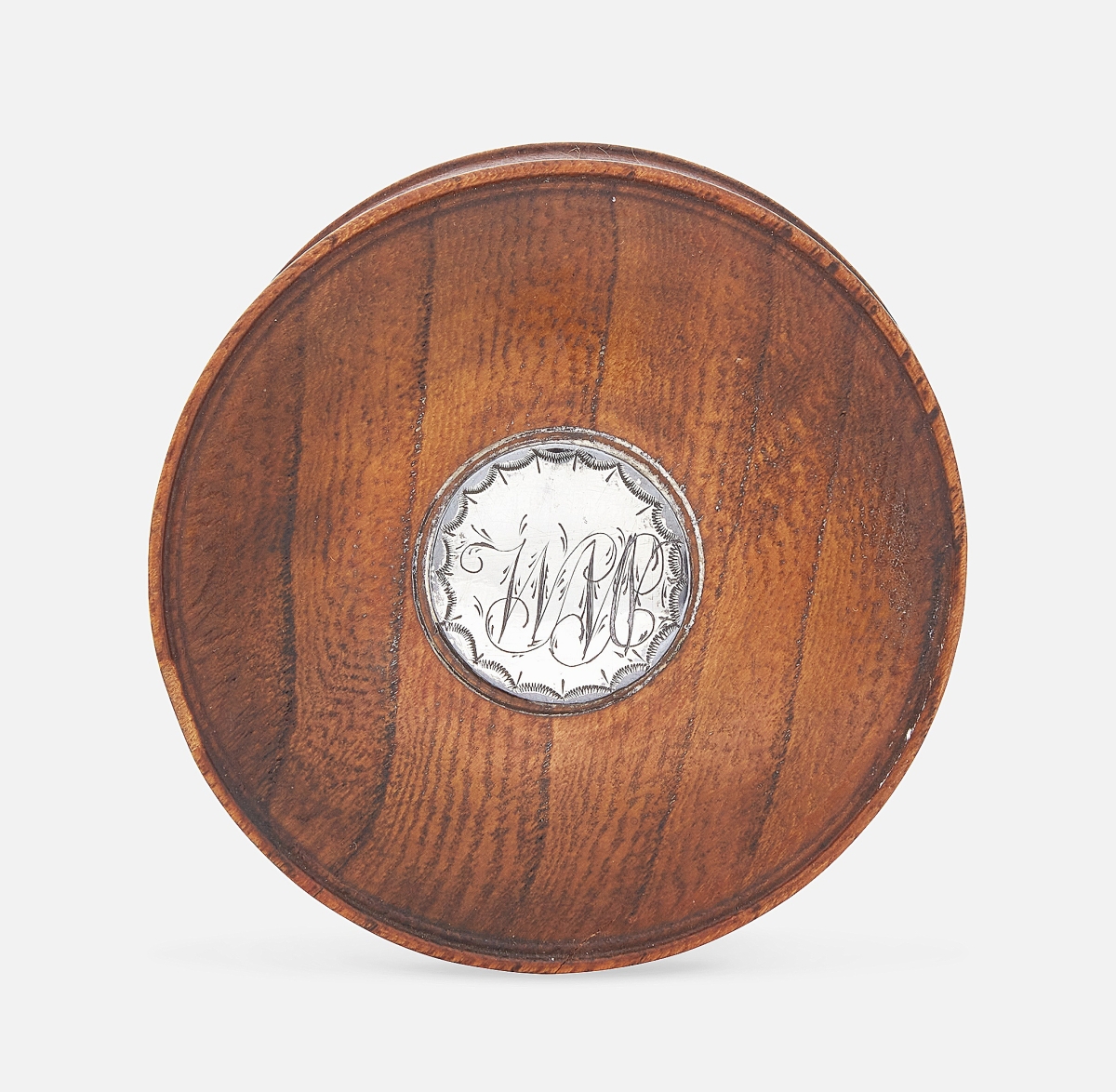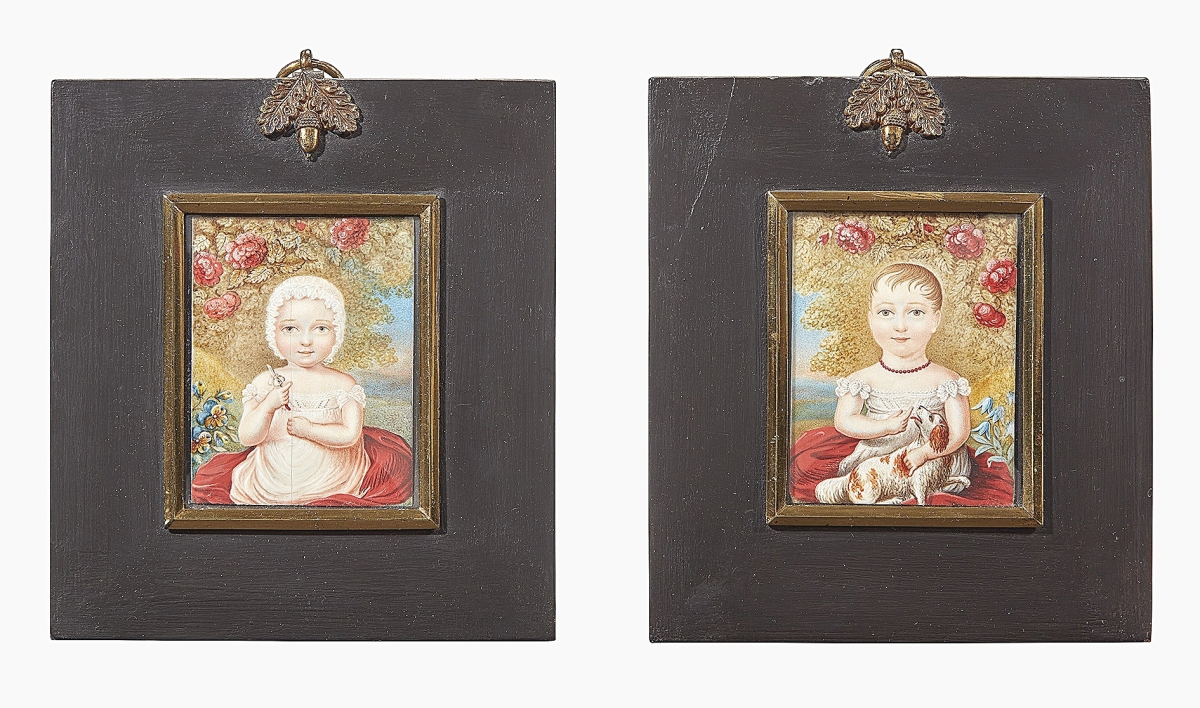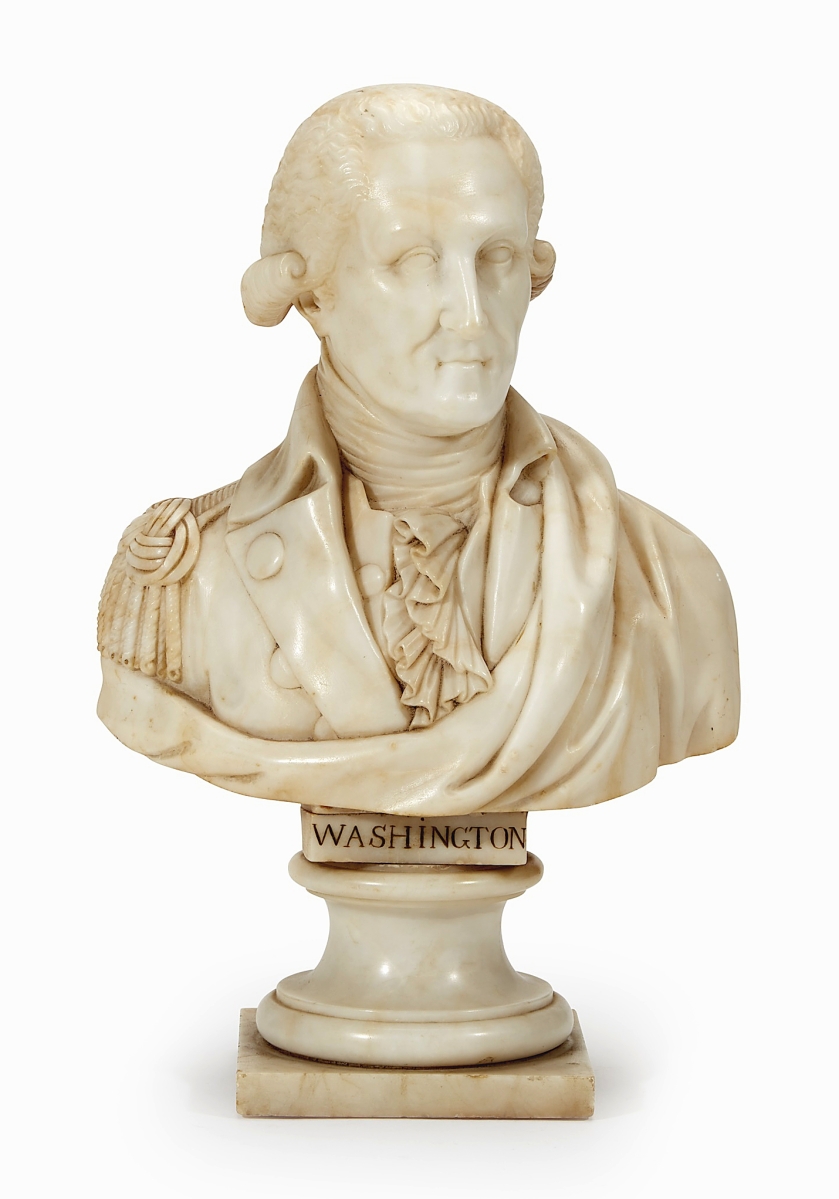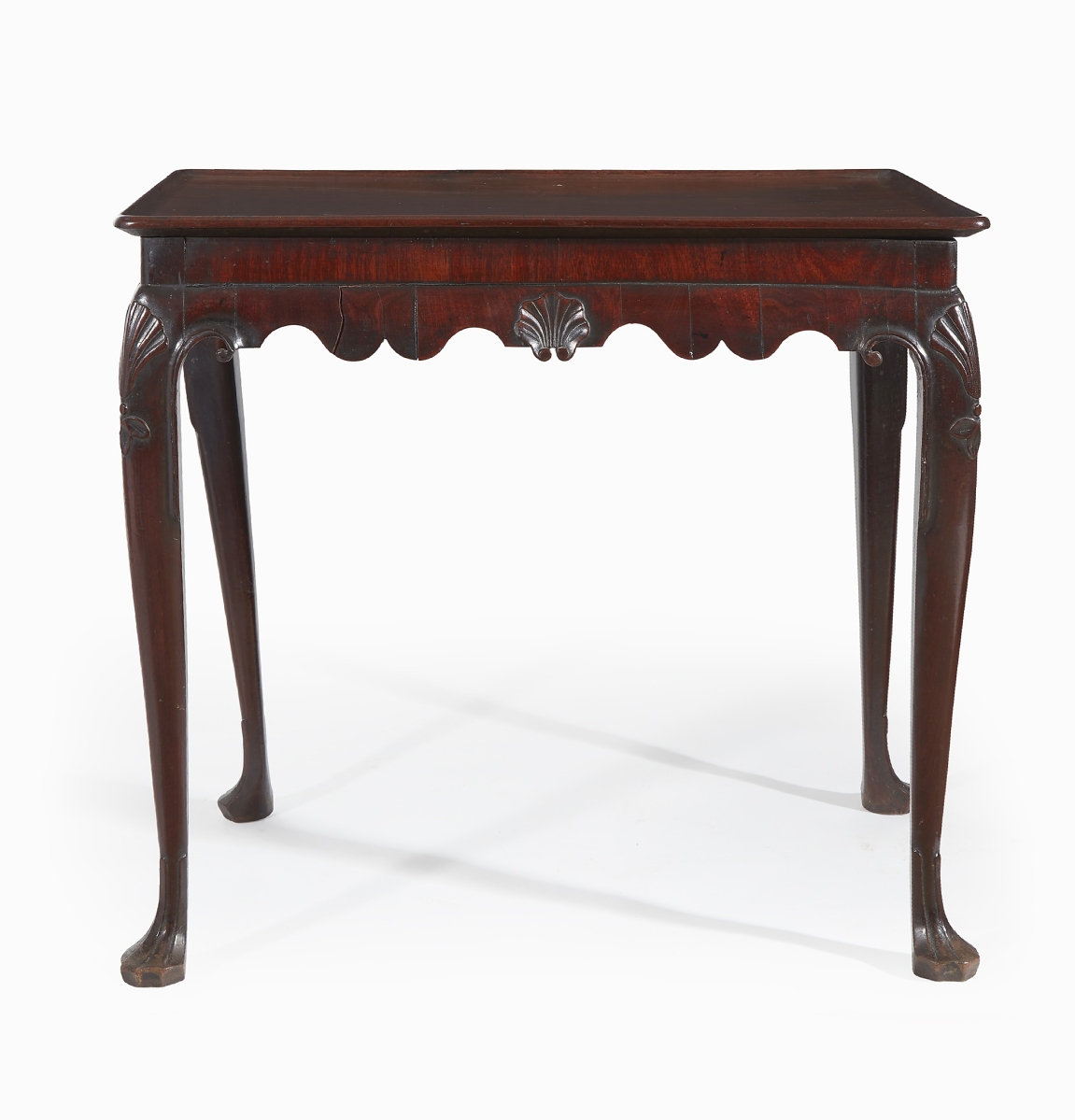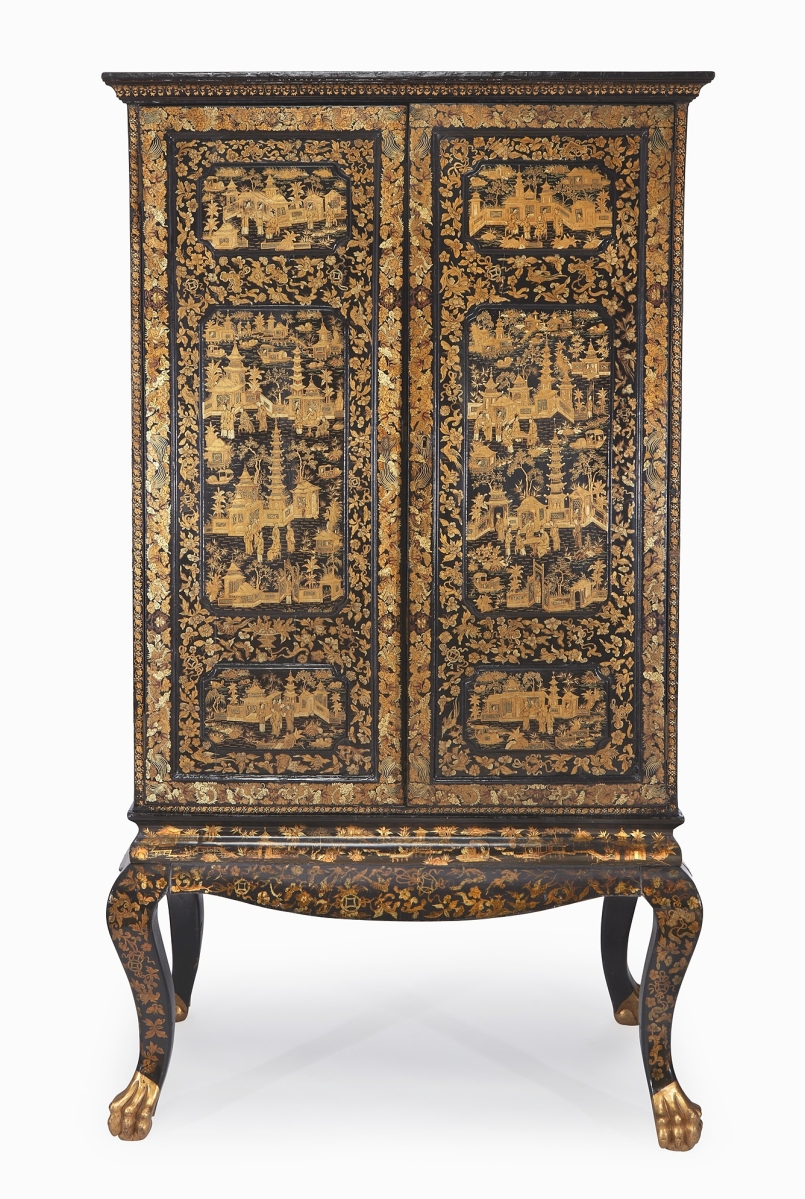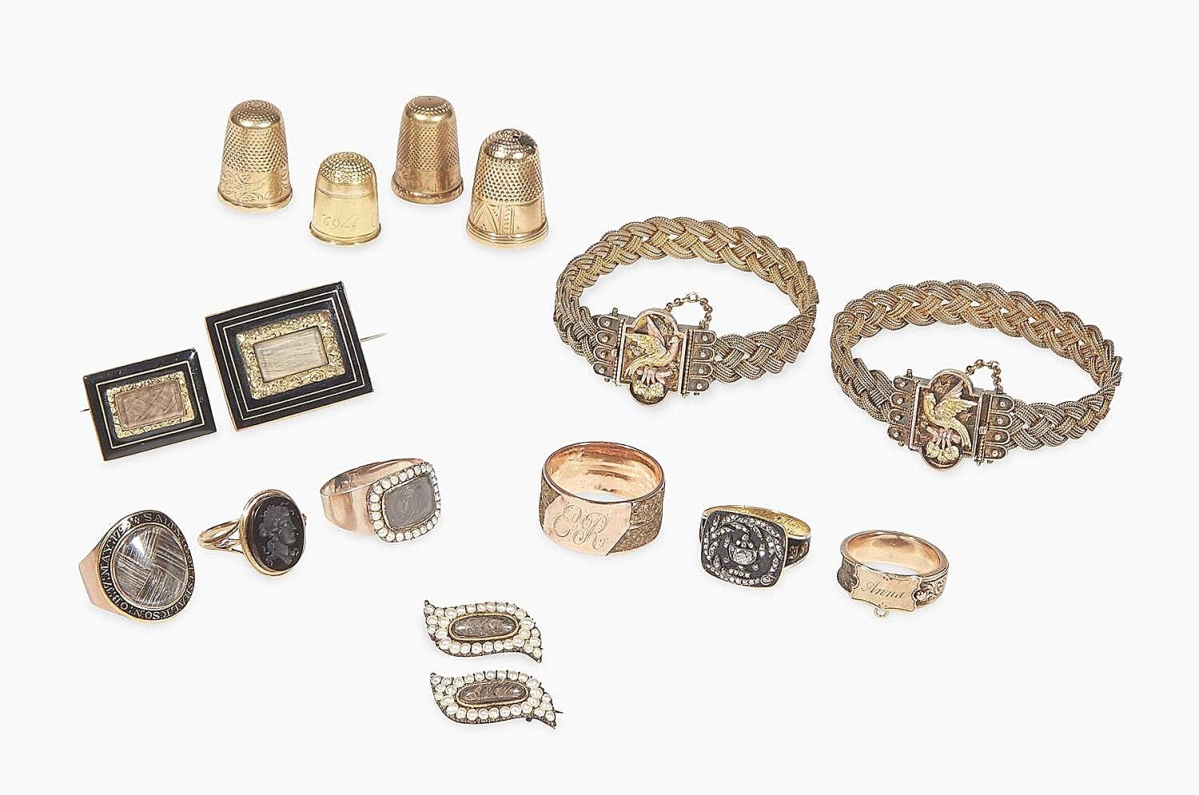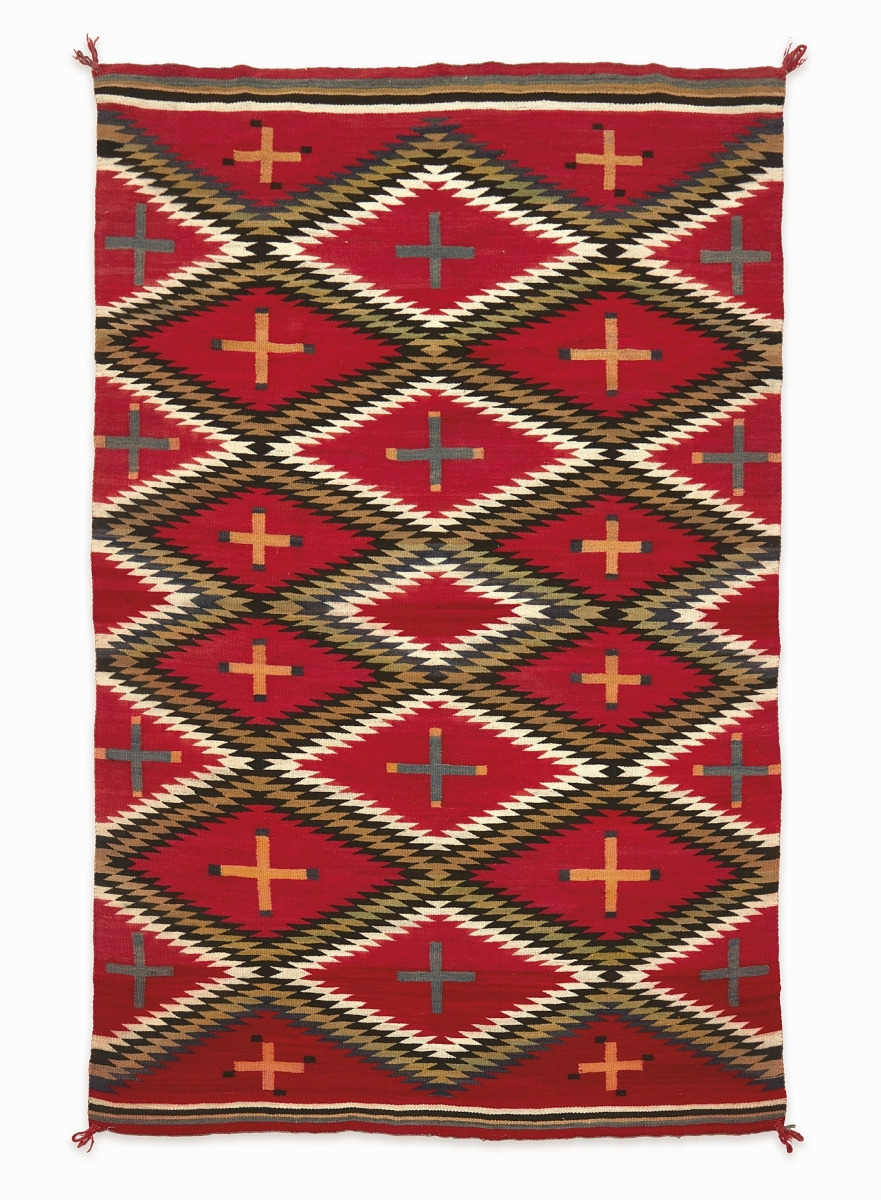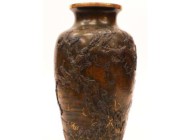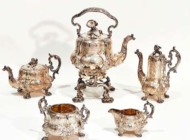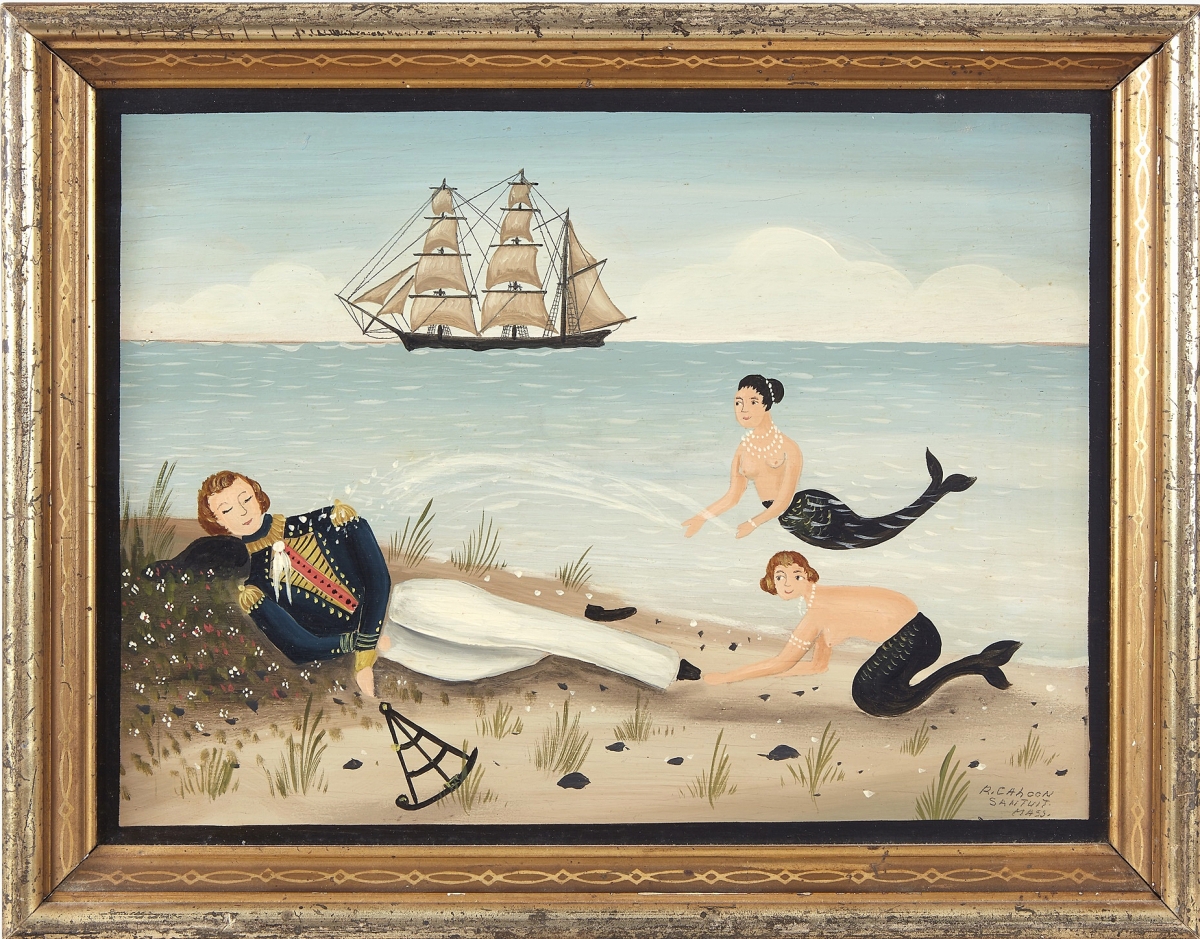
The top lot in the sale was Ralph Cahoon’s (1910-1982) “Washed Ashore,” a small, 11½-by-8-inch oil on board that took $32,760.
Review by Greg Smith, Photos Courtesy Freeman’s
PHILADELPHIA – Freeman’s American Furniture, Folk and Decorative Arts sale on April 27 went 82 percent sold as the firm’s head of American Furniture, Folk and Decorative Arts, Lynda Cain, tallied another success story. “History sells,” she said, “and it’s something we do exceptionally well.” The sale would total $689,157.
Cape Cod painter Ralph Cahoon (1910-1982) stole the day when “Washed Ashore,” a small, 11½-by-8-inch oil on board sailed to $32,760 to a private collector. The image features the moment two mermaids stumble upon a Naval officer who lies asleep – or unconscious – on the beach with his sextant or octant by his side. One mermaid tugs on his foot while the other splashes him with some water.
“I think it did well because it was a little different,” Cain said. ” It was small – very small. We had a lot of left bids on it, the elements were charming.”
Highest among American furniture was a poplar Berks County dower chest attributed to John Bieber (1763-1854), which brought $18,900. The work was profusely painted with a double heart motif with interior pinwheels on its central front panel and was inscribed to Eva Beier and dated 1786 with original lock and hardware. The chest’s provenance is documented through five generations of the family before it was sold by GKS Bush, Inc., in 1987. “We can trace the ownership on it right back to day one,” Cain boasted.
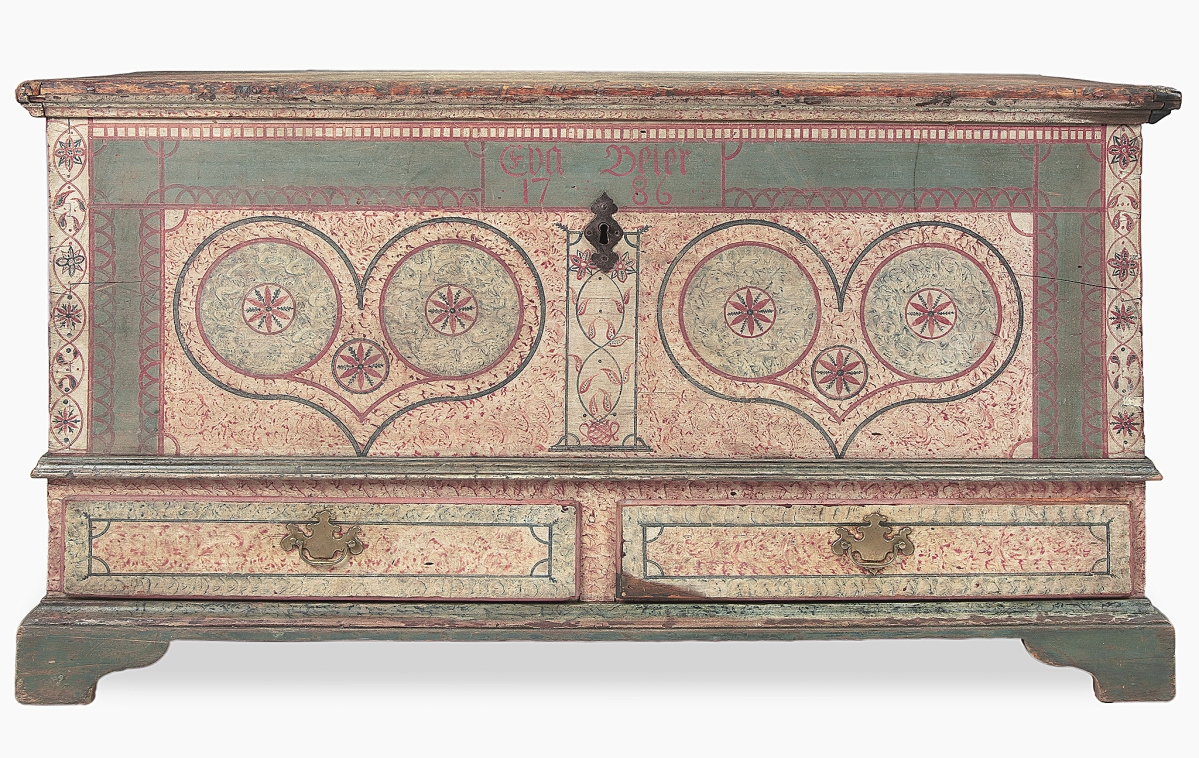
Highest among the furniture was this profusely decorated poplar Berks County dower chest attributed to John Bieber (1763-1854), which brought $18,900. It came with its original lock and hardware and was inscribed to Eva Beier and dated 1786.
Some of the highest estimated furniture works did not entice enough interest, though bidders were content bidding up lower estimated examples well above expectations. At $11,340 was a Chinese export black lacquered cabinet with profuse gilt decoration from the first half of the Nineteenth Century. An Eighteenth Century Connecticut Queen Anne high chest with bold tiger maple grain brought $8,190 on a $5,000 high estimate. Once part of the Mabel Brady Garvan collection was an Eighteenth Century Irish Queen Anne mahogany tea table with shell-carved knees and central shell to the apron. It sold for $6,930.
Measuring just 3 inches diameter, a patch box made from William Penn’s “Treaty Elm” would sell for $4,410. The lid was set with a silver medallion engraved WMP with a paper label to the interior that read, “This Box was made from a part of the celebrated Elm tree under the shade of which William Penn the Founder of Pennsylvania made a Treaty with the Indians in the year 1682.” The treaty mentioned is the Treaty of Shackamaxon, which Penn brokered with the Lenape along the Delaware River. The Lenape term “Sakimauchheen Ing” translates “to make a chief or king place.” It was under that same tree that the Lenape supposedly crowned their chiefs. The image on the cover of our prevuous issue, dated May 14, 2021, features a wampum belt of two figures holding hands that will be on display at the Philadelphia Museum of Art. It was reportedly given to Penn by the Lenape at the signing of this treaty.
Returning bidders to Freeman’s annual April Americana sale may remember a tinware painted Liberty cap that brought $18,750 in the firm’s auction last year. It had reportedly been carried on a flag pole during the Pratt Street Riot. The same bidder chased and bought a carved and painted liberty pole hat in this sale, 20 inches high, with a fabulous twist and a detailed drop tassel. Circa 1825, it brought $12,600.
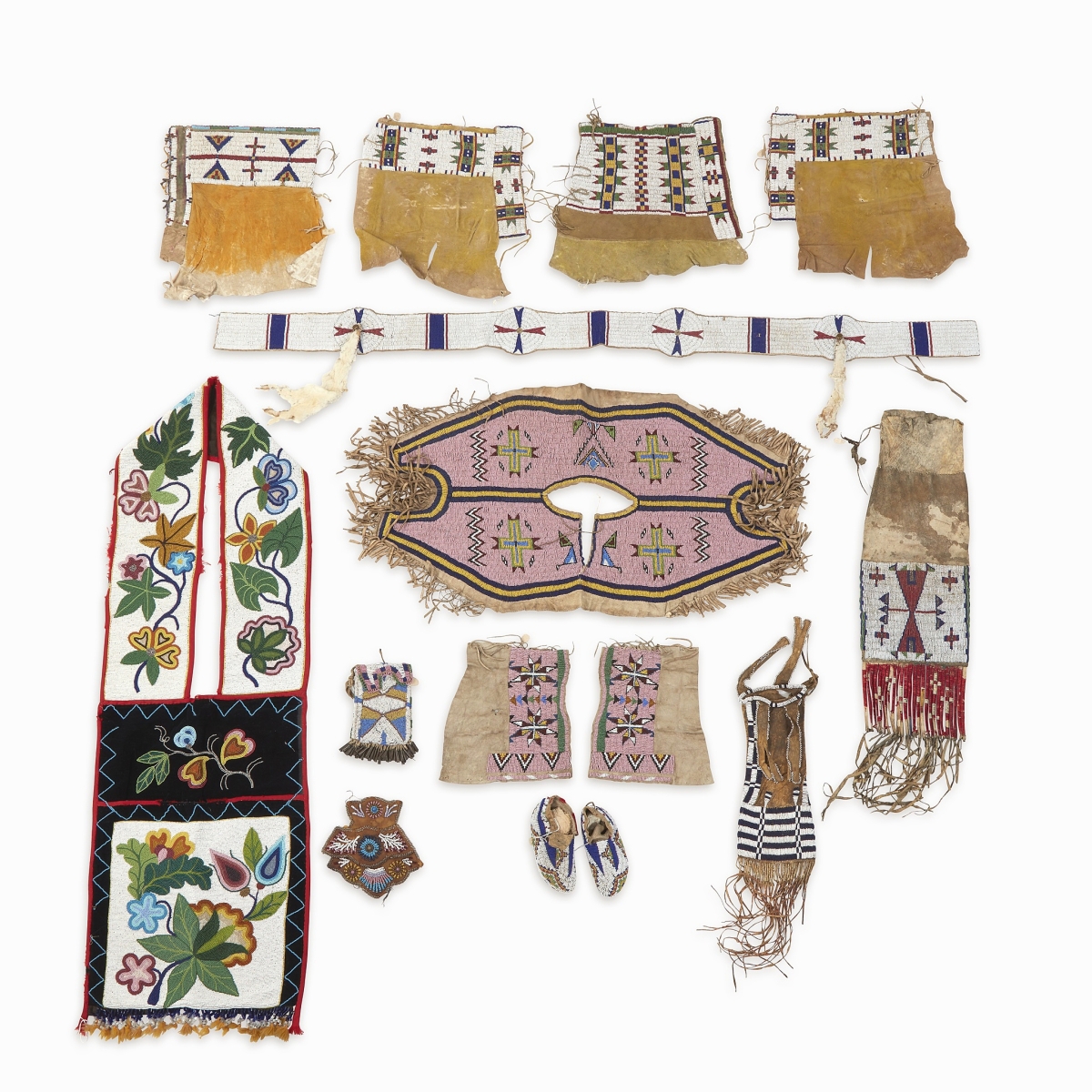
Selling for $18,900 was a collection of Native American beaded hide and cloth accessories, many of them from the Lakota Sioux. They had been acquired by Frank B. Thomas (1894-1984) in the late 1940s-early 1950s at Grove Park Lodge, part of the Bigwin Inn at Lake of Bays, Muskoka, Ontario.
A group of mourning and Victorian jewelry and accessories took $11,340 over a $2,500 high estimate. Included in the lot of 16 works, which blended examples from America and England, was an enameled and hair ring for Sarah “Sally” Hays Gottschalkson (1755-1799) of Philadelphia and an enamel and hair brooch for her brother, Samuel Hays (1764-1838), a prominent Philadelphia merchant.
“It’s so seldom that we can find some local and historically significant people represented in these,” Cain said. “It’s tough enough to find American mourning pieces, but to find Philadelphia pieces from a prominent merchant family – I thought that was wonderful.”
An extraordinary pair of miniature portraits by William Owen (English, 1769-1825) may be the only works known by the artist, the auction house said. The portraits of William Compton and Mary Evans Compton feature these children sitting on a red blanket before a golden glowing tree with lush red blossoming flowers. The duo went out at $2,772.
With an exceptionally carved frill, a marble bust of George Washington in uniform would sell for $8,820. The marble measured only 12 inches high and dated to the Nineteenth Century. Other images of America’s first president would prove fruitful, including “The Landsdowne Portrait of George Washington” after Gilbert Stuart (1755-1828), which took $13,860. The 35-by-23-inch portrait bore an old exhibition label for the Walters Art Gallery in 1944, as well as another label for David Bendann’s Fine Art Rooms in Baltimore. Founded in 1859, the photography studio Bendann Brothers was established by Civil War-era Jewish photographers Daniel Bendann and brother David Bendann. David would split off into his art gallery in 1874 and it remains in that family today. Customers would often commission portraits from his studio, and he would hire an artist to recreate famous images from photographs, sometimes painting directly over them.
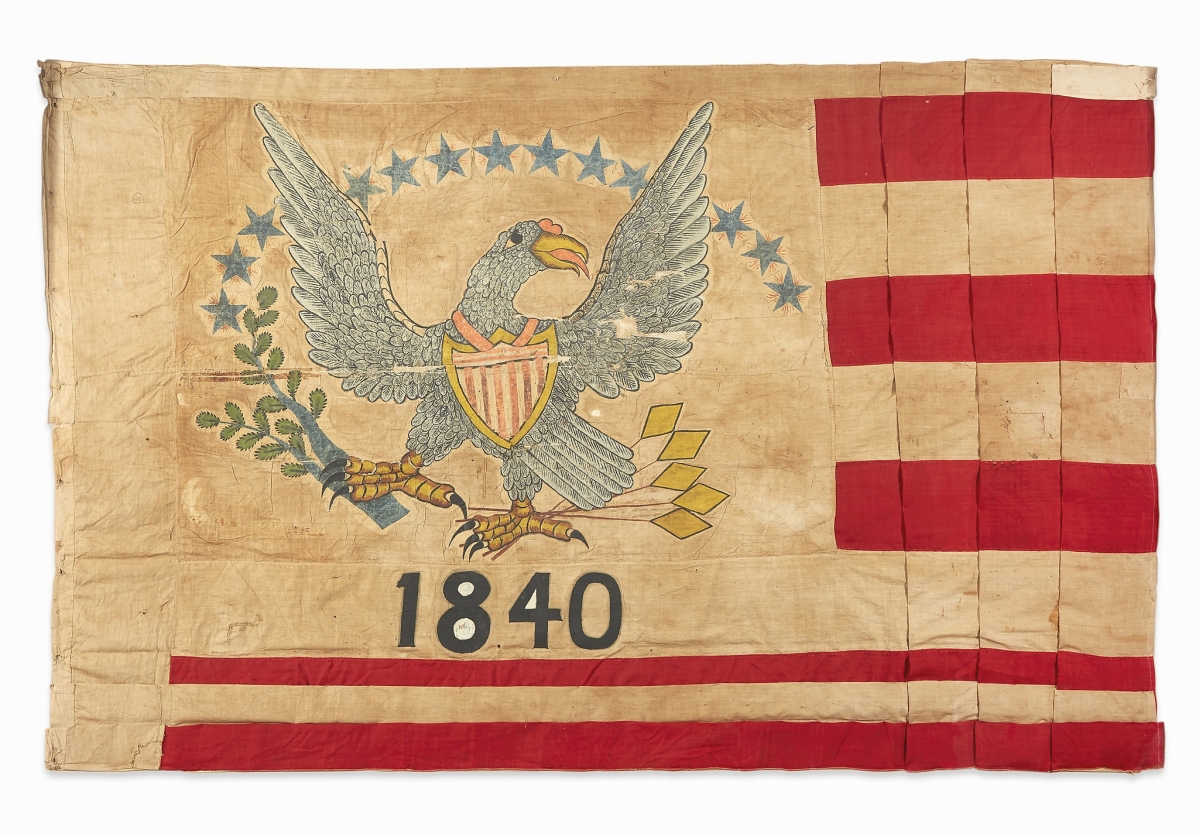
Rising to $17,650 was an American flag associated with pre-statehood California that sold to the trade. It had a connection to Sutter’s Fort, a trading and farming outpost at the junction of the Sacramento and American Rivers.
A 13-star American flag associated with pre-statehood California was bid up to $17,640. Oral accounts state that the flag was flown at Sutter’s Fort (1839-1848), a trading and farming outpost at the junction of the Sacramento and American Rivers, though Freeman’s believed it was more probably flown on a merchant ship that did business at Sutter’s Fort. The firm said that Sutter was more likely to fly a flag of the Mexican Republic or the Mexican Civil flag as the area was in that country’s control at the time. Freeman’s wrote, “Indeed, Sutter threatened to fly the French national flag when having problems with Mexican authorities.” An account from William Dane Phelps, a Boston sea captain who took his boat to visit Fort Sutter while it was being built in 1841, recorded, “And this I claim to have been the first passage of a ship’s boat on that river, and the first time that the Stars and Stripes waved over its waters.” On the design, Freeman’s added, “The remarkable canton of this Flag has interpreted and rendered the Great Seal with regional California and Mexican models: the Golden Eagle or Mexican Royal eagle modeled as the American Eagle, and the nopal cactus modeled as olive branches.”
The sale was set up for a full preview in the firm’s 1600 West Girard Avenue gallery. Bidders were able to make appointments and preview items. Cain says she believes her next sale in the fall will be at the firm’s new galleries at 2400 Market Street.
Prices include buyer’s premium. For information, 267-414-1237 or www.freemans.com.

